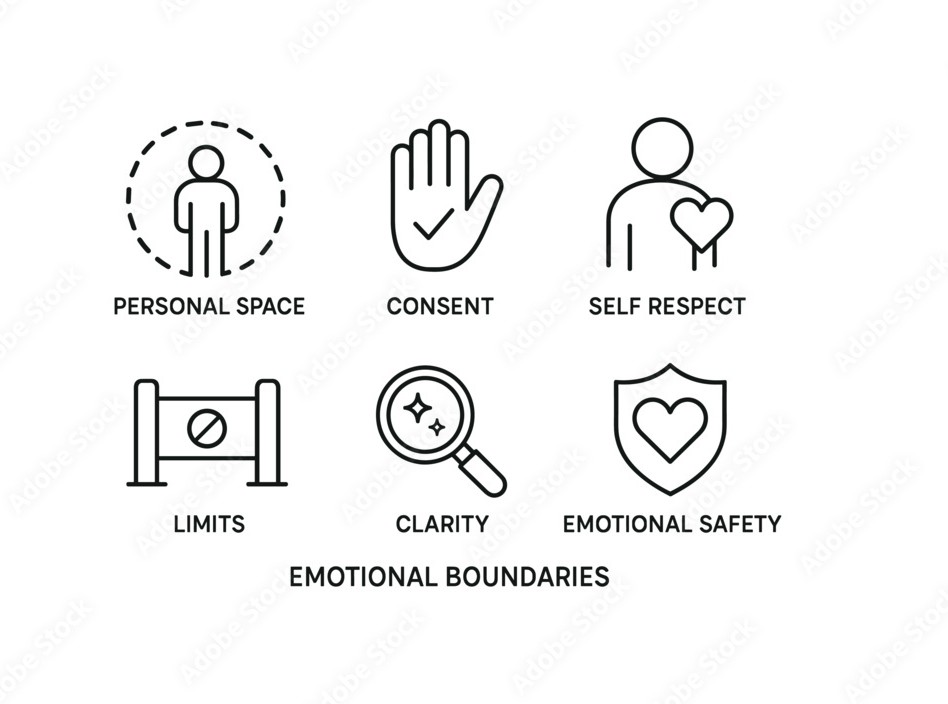Written by: Deepika Sathish,
Published on: 17th Sep 2025.
A Brief Introduction: In today’s fast-paced, hyper-connected world, it’s easy for us to feel stretched thin—constantly saying “yes” when we want to say “no,” putting others’ needs before our own, and pushing through exhaustion just to meet expectations. For many of us, this way of living feels normal. But beneath the surface, it often leads to burnout, resentment, and emotional fatigue.
That’s where boundaries come in.
What Are Boundaries? Boundaries are not walls meant to shut people out. They are healthy, clearly communicated limits that protect our emotional, mental, and physical well-being. Boundaries help define where one person ends and another begins. They are essential for maintaining self-respect, protecting energy, and fostering healthy relationships.
Think of boundaries like the fence around a garden. They don’t block out sunshine or air—they simply protect the space so that the plants can grow. In the same way, boundaries aren’t about rejection; they’re about self-preservation and clarity.
Why Boundaries Are Necessary
Most of us struggle with setting boundaries because we don’t want to disappoint others or appear selfish. Often, the discomfort of setting limits is rooted in people-pleasing tendencies, fear of rejection, or a misunderstanding of what boundaries truly are.
Yet the consequences of not having boundaries are significant. When we constantly overextend ourselves—at work, in relationships, or even within the families—we begin to feel overwhelmed, undervalued, and emotionally depleted. Over time, this can lead to:
- Chronic stress or anxiety
- Burnout or fatigue
- Resentment toward others
- A loss of identity or personal direction
- Difficulty maintaining healthy relationships
Setting boundaries is not only a form of self-care—it’s a critical life skill that contributes to emotional resilience, clarity, and balance.
How to Start Setting Boundaries While the idea of setting boundaries may seem intimidating at first, the process becomes more natural with practice and self-awareness. Here are some practical steps to get started:
1. Get Clear on Personal Needs: Before setting a boundary, it’s important to understand what’s needed and why. This might include needing alone time after work, wanting to avoid certain topics in conversation, or requiring advance notice before making plans. Paying attention to emotional signals—such as anxiety, guilt, or anger—can reveal areas where boundaries may be lacking.
2. Learn to Say “No” Without Guilt: Saying “no” is one of the most powerful ways to honor a boundary. It doesn’t have to be harsh or cold—it can be respectful and kind. And saying “no” is not a rejection of the person—it’s a prioritization of personal well-being.
3. Use Clear Communication: When setting a boundary, it helps to use “I” statements to express how something feels without placing blame. This keeps the tone respectful and avoids triggering defensiveness in others. Clarity is kindness. Being direct helps avoid misunderstandings and sets expectations clearly.
4. Expect Some Discomfort—and Persist Through It It’s normal to feel awkward, guilty, or even scared when setting boundaries for the first time. People who are used to having constant access—whether emotionally, mentally, or physically—may not respond well at first. But discomfort doesn’t mean a person is doing something wrong. In fact, it’s often a sign that something is changing for the better. Those who respect and care will adjust. Those who don’t may resist—but that resistance isn’t a reason to abandon boundaries. It’s a signal to keep going.
5. Make Boundaries a Consistent Practice Boundaries aren’t a one-time conversation—they’re a continuous process. As people evolve, so do their needs. It’s perfectly okay to reassess and adjust boundaries over time.
The Positive Impact of Boundaries Once boundaries are in place, many of us can notice dramatic shifts—not just internally, but in their relationships and everyday life. Some of the most common benefits include:
- Improved energy levels due to reduced emotional drain
- More respectful, honest relationships with clearer expectations
- Less resentment and emotional overwhelm
- Increased self-confidence and self-respect
- Greater clarity in decision-making and values
Conclusion: Boundaries are not about being cold, distant, or unavailable. They’re about being honest—first with oneself, then with others. They are the foundation of mental wellness, emotional safety, and fulfilling relationships.
For anyone who has spent years putting others first, learning to set boundaries may feel unfamiliar at first. But with self-awareness, courage, and practice, boundaries become not just doable—but deeply liberating.
“ Setting boundaries is not a selfish act. It’s a courageous one. And everyone deserves to feel safe, respected, and whole—in their relationships and within themselves.”

